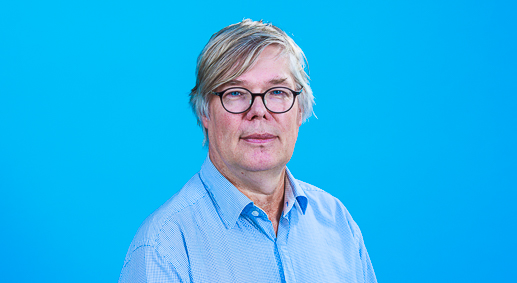Biosketch

Arnold Driessen obtained his PhD (with distinction in 1987) in Molecular Microbiology with Prof. W.N. Konings (University of Groningen) and developed a generic method for the in vitro energization of membranes derived from fermentative bacteria. He then went for a postdoctoral stay at UCLA (USA) where he reconstituted, as the first, the bacterial protein translocation system with purified components and resolved the basic mechanism of protein translocation. In 1990, he returned to the University of Groningen, where he established a research group at GBB for studying various aspects of membrane biology and (protein) transport. Arnold’s research focusses on biochemical characterization of complex membrane-associated processes and has a strong multidisciplinary character, including single molecule physics, synthetic-organic chemistry, and structural biology. The research focuses on protein translocation and membrane protein insertion in bacteria, as well as phospholipid biosynthesis. Recent work concerns the development of synthetic cells and aspects of the evolution of membrane formation, and on the molecular biology and natural product discovery in filamentous fungi.
Three top publications 2017-2022
1. Seinen AB, Spakman D, van Oijen AM & Driessen AJM (2021) Cellular dynamics of the SecA ATPase at the single molecule level. Scientific Reports 11: 1433.; DOI: https://doi.org/10.1038/s41598-021-81081-2
First demonstration that the molecular motor SecA of the protein translocase alternates between lipid-bound and translocon-bound states in living cells. In follow-up work, the role of the lipid bound SecA was elucidated that had remained elusive for a least a decade. SecA binds to acidic phospholipids with it amphipatic N-terminus and this primes SecA for the high affinity binding to the translocon, SecYEG, whereupon SecA is activated for ATP hydrolysis to initiate protein translocation.
2. Exterkate M, Caforio A, Stuart MCA & Driessen AJM (2018) Growing membranes in vitro by continuous phospholipid biosynthesis from free fatty acids. ACS Synthetic Biology 19: 153-165; DOI: https://doi.org/10.1021/acssynbio.7b00265
Complete reconstitution of a hybrid phospholipid pathway utilizing 8 purified and reconstituted (membrane) proteins allow the bulk biosynthesis of phospholipids and growth of pre-existing membranes upon a feed with simple precursors (fatty acids, glycerol-3-phosphate, serine, ATP and CTP). This system forms the basis of for a growing compartment for synthetic cells and was extended with an energy-generating system and a cofactor regenerating system.
3. Caforio A, Siliakus MF, ……, Minnaard AJ, Driessen AJM & van der Oost J (2018) Converting Escherichia coli into an archaebacterium with a hybrid heterochiral membrane. Proceedings of the National Academy of Sciences USA 115: 3704-3709; DOI: https://doi.org/10.1073/pnas.1721604115
Experimental test of a major evolutionary hypothesis explaining the origin of bacteria and archaea and how they emerged from the last universal ancestor of life, LUCA. According to this hypothesis, the distinct phospholipid composition of archaea (glycerol-1-phosphate ether-linked to two isoprenoid chains) and bacteria (glycerol-3-phosphate ester-linked to two acyl chains) is the result of an instability of the presumed heterochiral mixed membrane in LUCA. By boosting isoprenoid biosynthesis and heterologous expression of archaeal ether lipid biosynthesis genes, we obtained a viable E. coli strain, of which the membranes contain a mixture of archaeal and bacterial lipids with the expected stereochemistry. This result disagrees with the prediction of the lipid divide theory, and it is argued that LUCA likely was not just a single life form but a mixture of life forms, from which successfully two distinctive prokaryotic life forms emerged, each with a different membrane composition.
| Last modified: | 26 October 2023 4.13 p.m. |
